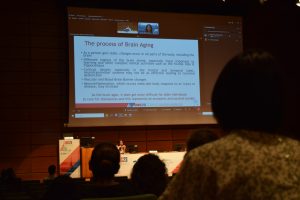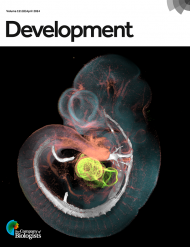24 October 2023
Travelling represents the largest carbon impact of an event. It can count for up to 56% of the whole event’s carbon footprint 1, and the impact is significantly higher when international participants use flights to reach the event.
With this in mind, we were delighted to award a Sustainable Conferencing Grant to Dr Serena Stanga who came with a solution that combined technology with alternative travelling, leading to a reduction in travel carbon footprint for her symposium “In pursuit of healthy brain aging: unveiling the biology of novel age-related mechanisms leading to dementia”, which was part of the 20th National Congress of the Italian Society for Neuroscience (SINS) 2.
Action 1: alternative travelling
With the support of the Sustainable Conferencing Grant, the travel expenses for the invited speakers were subsidised, while also giving them the opportunity to travel sustainably by train to the event in Turin, Italy. Choosing trains, which can emit 70-90% less CO2 emissions than cars 3 4 5, offered delegates the opportunity to meet and exchange ideas about their research without compromising their carbon footprint. Opting for trains can be both convenient and environmentally- friendly. As Dr Stanga stated, “Everyone was very happy with the train connections they had.” Additionally, the organisers selected a venue and speakers’ hotels which were located near public transport options, promoting greener travel alternatives over taxis.
Action 2: remote attendee
Integrating a platform for international participants to join remotely is a great step to boost the event’s sustainability. There are numerous platform options available for creating engaging hybrid events. Dr Serena Stanga, who was based in the USA, participated fully-remotely using Webex. She highlighted that such platforms are user-friendly and commonly used. She felt 100% integrated, could listen to the other speakers and questions, and was able to both present her talk and attend Q&A sessions. She commented “The camera seamlessly switched between the presentation and the audience, and it made me feel like I was there. For the future events, it would be great to create remote round table meetings to continue the discussion with the participants.”
There are numerous platform options available for creating engaging hybrid events. Dr Serena Stanga, who was based in the USA, participated fully-remotely using Webex. She highlighted that such platforms are user-friendly and commonly used. She felt 100% integrated, could listen to the other speakers and questions, and was able to both present her talk and attend Q&A sessions. She commented “The camera seamlessly switched between the presentation and the audience, and it made me feel like I was there. For the future events, it would be great to create remote round table meetings to continue the discussion with the participants.”
By joining online, Dr Stanga saved time and an average of 1 tonne of CO2 emissions 6 suggested targets for individuals to reduce their carbon emissions to 0.7 tonnes/year/person by 2050 7 8 9.
Some final advice from Dr Serena Stanga?
“Go paper-free. Replace printed schedules with environmental-friendly apps. Also, plan transportation in advance. For large conferences, it is important to offer the participants discounts on train travel and promote more sustainable transport options. We did this for the SINS congress 2023 and this encouraged more people to take public transport, especially since this option can make travel cheaper.”
Any extra lessons learned from this event?
Another step to take is to follow the example of this symposium and integrate your meeting into a larger event, so that participants can take part in multiple events in just one trip.
This approach reduced the environmental impact significantly compared with the alternative of travelling separately to each event.
Do you want to make your event more sustainable too?
If you are interested in making your event more sustainable, but you don’t know where to start, see our tips in our latest blogs.
Check our Sustainable Conferencing Grant for financial support. We always welcome applications from biologists across the world and we are constantly working on promoting their most innovative ideas of creating sustainable scientific conferences for the biological community.
Acknowledgements
Dr Serena Stanga would like to thank those who made it possible for her to join the event online, in a hybrid format: the organising association Italian Society for Neuroscience (SINS), the congress chair Ferdinando Di Cunto (University of Turin), the Scientific committee chair Alessandro Vercelli (University of Turin), Mariarosa Mezzanotte and Javier Chicote Gonzalez (University of Turin), Claudia Saraceno (IRCCS Istituto Centro San Giovanni di Dio Fatebenefratelli, Brescia), Livia La Barbera (Campus Bio-Medico Univer. of Rome), Antonio Longobardi (IRCCS Istituto Centro San Giovanni di Dio Fatebenefratelli, Brescia), Tiziano Serfilippi (Marche Polytechnic University, Ancona).








You must be logged in to post a comment.